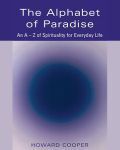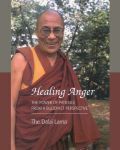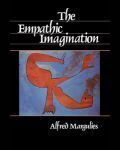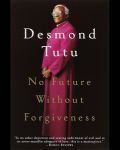Photo by Ali Shah Lakhani on Unsplash

Barasch, Marc Ian. The Compassionate Life: Walking the Path of Kindness (Berett-Koehler Publishers; Second edition, 2009).
How can compassion, a trait hardwired into our nervous system and waiting to be awakened, transform our lives and the world at large? Marc Barasch provides up-to-the-minute research to timeless spiritual truths, and weaves a stirring, unforgettable story of the search for kindness in a world that clearly needs it. With unfailing curiosity, Barasch poses vital questions: What can we learn from exceptionally empathetic people? Can we increase our compassion quotient with practice? What if the great driving force of our evolution were actually "survival of the kindest?" He comes up with challenging, ultimately inspiring answers. With encounters as diverse as observations of compassion amongst bonobo chimpanzees, to the story of a man who forgives his daughters killer, to teenage Palestinian and Israeli girls trying to wage peace, Barasch blends hard science and popular culture with his own hip, engaging narrative style to create a smart, provocative argument that a simple shift in consciousness changes pretty much everything.

Bergmann, Gudjon. Co-Human Harmony: Using Our Shared Humanity to Bridge Divides (Flaming Leaf Press, 2019).
People are tired of the divisiveness and acrimony that permeates our society. They are seeking real, down-to-earth, and achievable bridge-building methods that go beyond clichés and platitudes. In response to an ever-growing need, Rev. Gudjon Bergmann, founder and lead educator at Harmony Interfaith Initiative, gathered ideas, tools, and strategies from Nobel Peace Prize laureates, ethicists, interfaith leaders, civil rights icons, ancient prophets, sociologists, and psychologist, with an intent focus on bridging divides. The outcome is a unique composition for people who are interested in working towards a harmonious society. The overarching goal is to improve relations between those who have strong ideological disagreements about everything from religion and politics to diet and spirituality. Described as “refreshing,” “succinct, clear, and profound,” and “offering practical and powerful wisdom,” this earnest opus offers a soothing tonic to counter the disharmony in the world. Whether you are dealing with family discord due to politics, communal friction between religious sects, or wounds that are tearing at the fabric of society, you will find an array of methods, from new ways of thinking to a connective vocabulary, dialogue guidelines, co-human experiences, and more.

Bloom, Pamela. The Power of Compassion: Stories That Open the Heart, Heal the Soul and Change the World (Hampton Roads Publishing, 2010).
Compassion is much more than a state of mind. That's because it has the power to move people to act on behalf of others. Here more than forty, first-person stories by the likes of John F. Kennedy, Jr., Pema Chodron, Barbara Brodsky, Thich Nhat Hanh, Jay Jarvis Masters, Joan Halifax, and Sogyal Rinpoche that demonstrate how compassion can be a dynamic force that achieves concrete consequences. In one story, a monk welcomes a dying child into his home, providing the boy with practical care and a sense of peace during the boy's last nine months of life. In another story, a civil rights protester learns from a cellmate how to find compassion for those she once considered to be the "opposition."
In stories as gripping as they are inspirational, it becomes abundantly clear that intentional acts of kindness are nothing short of life-changing--and sometimes even world-changing. The writings collected here also prove that while our compassion aids others, it is also a mighty force that opens our own hearts. Pamela Bloom believes compassion is contagious. She has compiled a timely book for times worth changing.

Bloom, Pamela. Buddhist Acts of Compassion (Conari Press, 2000).
"My religion is compassion," the Dalai Lama has said. Indeed, the vow to be of benefit to others lies at the heart of Buddhist practice. This book collects dozens of profound and moving stories of true compassion. From the Buddhist monk who offered his body to starving animals, to modern Western practitioners who use Buddhist principles for healing and social reform, these stories inspire with their depth, tenderness, humor, and occasional outrageousness. Included are tales of the "crazy wisdom" kindness practiced by many masters in the Tibetan and Zen traditions, as well as selections from the best-loved Buddhist figures of today, including Sogyal Rinpoche, Sharon Salzberg, Thich Nhat Hanh, and the Dalai Lama.

Cooper, Howard. The Alphabet of Paradise: An A-Z of Spirituality for Everyday Life (Skylight Paths Publishing, 2003).
Paradise is part of the world in which we live. Here’s how to experience it day to day, moment to moment. Paradise is not in some far-off distant time or place, nor is it beyond death. It’s here and now, a dimension of our everyday lives.
One of the most eloquent new voices in spirituality, Howard Cooper takes us on a journey of discovery--into ourselves and into the past--to find the signposts that can help us live more meaningful lives. In twenty-six engaging chapters--from A to Z--Cooper spiritually illuminates the subjects of our daily lives. He examines these sources by using an ancient Jewish mystical method of interpretation that reveals both the literal and more allusive meanings of each. Topics include: awe, bodies, creativity, dreams, emotions, food, humor, illness, justice, love, money, relationships, sports, uncertainty, xenophobia, you and more.
With remarkable range of cultural understanding and spiritual insight--from Salman Rushdie to soccer to sauerkraut--The Alphabet of Paradise helps us uncover the mystical meaning of our everyday lives.

Gandhi, Mahatma, ed. Louis Fischer. The Essential Gandhi (Vintage; 2nd edition, 2002).
Mohandas K. Gandhi, called Mahatma (“great soul”), was the father of modern India, but his influence has spread well beyond the subcontinent and is as important today as it was in the first part of the twentieth century and during this nation’s own civil rights movement. Taken from Gandhi’s writings throughout his life, The Essential Gandhi introduces us to his thoughts on politics, spirituality, poverty, suffering, love, non-violence, civil disobedience, and his own life. The pieces collected here, with explanatory head notes by Gandhi biographer Louis Fischer, offer the clearest, most thorough portrait of one of the greatest spiritual leaders the world has known. With a new Preface drawn from the writings of Eknath Easwaran.
Gandhi was inevitable. If humanity is to progress, Gandhi is inescapable. . . . We may ignore him at our own risk.
~ Dr. Martin Luther King, Jr.

Gyatso Tenzin, H. H. the Dalai Lama. The Art of Happiness (Riverhead; 10th Anniversary Edition, 2009).
Nearly every time you see him, he's laughing, or at least smiling. And he makes everyone else around him feel like smiling. He's the Dalai Lama, the spiritual and temporal leader of Tibet, a Nobel Prize winner, and a hugely sought-after speaker and statesman. Why is he so popular? Even after spending only a few minutes in his presence you can't help feeling happier.
If you ask him if he's happy, even though he's suffered the loss of his country, the Dalai Lama will give you an unconditional yes. What's more, he'll tell you that happiness is the purpose of life, and that the very motion of our life is toward happiness. How to get there has always been the question. He's tried to answer it before, but he's never had the help of a psychiatrist to get the message across in a context we can easily understand.
The Art of Happiness is the book that started the genre of happiness books, and it remains the cornerstone of the field of positive psychology. Through conversations, stories, and meditations, the Dalai Lama shows us how to defeat day-to-day anxiety, insecurity, anger, and discouragement. Together with Dr. Howard Cutler, he explores many facets of everyday life, including relationships, loss, and the pursuit of wealth, to illustrate how to ride through life's obstacles on a deep and abiding source of inner peace. Based on 2,500 years of Buddhist meditations mixed with a healthy dose of common sense, The Art of Happiness is a book that crosses the boundaries of traditions to help readers with difficulties common to all human beings. After being in print for ten years, this book has touched countless lives and uplifted spirits around the world.

Gyatso Tenzin, H. H. the Dalai Lama. The Dalai Lama’s Little Book of Inner Peace: The Essential Life and Teachings (Hampton Roads Publishings, 2009).
His Holiness the Dalai Lama offers powerful, profound advice on how to live a peaceful and fulfilling life amidst all the conflicts of the modern world.
In this distillation of his life and teachings, the Dalai Lama paints a compelling portrait of his early life, reflecting on the personal and political struggles that have helped to shape his understanding of our world. Offering his wisdom and experience to interpret the timeless teachings of the Buddha, The Dalai Lama's Little Book of Inner Peace is fresh and relevant to our troubled times. He explains in a simple and accessible way how each of us can influence those around us by living with integrity. And he holds out hope that, through personal transformation, we can all contribute to a better world.

Gyatso Tenzin, H. H. the Dalai Lama. Being Prayer--Transforming the Mind: Teachings on Generating Compassion (Element Books, 2003).
A primary theme in Being Prayer-Transforming Consciousness is that nothing is as substantial as it seems. We fuel a dynamic spiritual unfolding when we reach a realization of the insubstantiality of what we believe to be true, when we see that both our doubts and certainties need to be challenged.
Understanding insubstantiality does not mean that things do not exist at all. Instead it invites us to a looser perception, an awareness that we are each conditioned by our life experiences. This conditioning contributes to our uniqueness but also limits our view and colors all of our perceptions. We can learn to widen our perceptions and open to what is most real, to vitality, energy, enthusiasm, and joy.
Being Prayer is intended as a companion to be revisited again and again, to be read and practiced slowly digesting it in small bites at a time. With each reading different teachings will stand out based on life circumstances and developing understanding. Suggestions for further practice and study are included in each chapter and can also be found by following links to the authors websites.

Gyatso, Tenzin, H. H. the Dalai Lama. Ethics for the New Millennium (Riverhead, 2001).
In a difficult, uncertain time, it takes a person of great courage, such as the Dalai Lama, to give us hope. Regardless of the violence and cynicism we see on television and read about in the news, there is an argument to be made for basic human goodness. The number of people who spend their lives engaged in violence and dishonesty is tiny compared to the vast majority who would wish others only well. According to the Dalai Lama, our survival has depended and will continue to depend on our basic goodness. Ethics for the New Millennium presents a moral system based on universal rather than religious principles. Its ultimate goal is happiness for every individual, irrespective of religious beliefs. Though he himself a practicing Buddhist, the Dalai Lama's teachings and the moral compass that guides him can lead each and every one of us—Muslim, Christian, Jew, Buddhist, or atheist—to a happier, more fulfilling life.

Gyatso, Tenzin, H. H. the Dalai Lama, Jeffrey Hopkins, ed. How to Practice: The Way to a Meaningful Life (Atria Books, 2003).
As human beings, we all share the desire for happiness and meaning in our lives. According to His Holiness the Dalai Lama, the ability to find true fulfillment lies within each of us. In this very special book, the spiritual and temporal leader of Tibet, Nobel Prize winner, and bestselling author helps readers embark upon the path to enlightenment with a stunning illumination of the timeless wisdom and an easy-access reference for daily practice.
Divided into a series of distinct steps that will lead spiritual seekers toward enlightenment, How to Practice is a constant companion in the quest to practice morality, meditation, and wisdom. This accessible book will guide you toward opening your heart, refraining from doing harm, and maintaining mental tranquility as the Dalai Lama shows you how to overcome everyday obstacles, from feelings of anger and mistrust to jealousy, insecurity, and counterproductive thinking. Imbued with His Holiness' vivacious spirit and sense of playfulness, How to Practice offers sage and practical insight into the human psyche and into the deepest aspirations that bind us all together.

Gyatso, Tenzin, H. H. the Dalai Lama with Nicholas Vreeland. An Open Heart: Practicing Compassion in Everyday Life (Bay Back Books, 2002).
Compassion-sympathy for the suffering of others and the desire to free them from it is wrestled with in all spiritual traditions. Yet how does one actually become a compassionate person? What are the mechanisms by which a selfish heart is transformed into a generous heart? In this acclaimed bestseller, His Holiness the Dalai Lama writes simply and powerfully about the everyday Buddhist practice of compassion, offering a clear, practical, inspiring introduction to the Buddhist path to enlightenment.

Gyatso, Tenzin, H. H. the Dalai Lama. Live in a Better Way: Reflections on Truth, Love, and Happiness (Compass, 1999).
Imbued with a friendly tone and pithy wisdom, this handsome handbook to approaching life "in a better way" includes six of His Holiness The Dalai Lama's most accessible and inspirational public lectures. Following each talk are the original question-and-answer sessions in which His Holiness opens himself up to his listeners and-now-to readers everywhere. His characteristically candid guidance on living fully and responsibly, especially at the start of a new millennium, focuses on specific themes that range from religious tolerance to compassion and nonviolence.
The book also includes a practical and highly readable introduction to Buddhism and The Dalai Lama's own spiritual heritage, written by the renowned Lama Thubten Zopa Rinpoche.

Gyatso, Tenzin, H. H. the Dalai Lama. Healing Anger: The Power of Patience from a Buddhist Perspective (Snow Lion, 1997).
All the world's major religions emphasize the importance of the practice of love, compassion, and tolerance. This is particularly true in the Buddhist traditions, which unanimously state that compassion and love are the foundation of all paths of practice. To cultivate the potential for compassion and love inherent within us, it is crucial to counteract their opposing forces of anger and hatred.
In this book, the Dalai Lama shows how through the practice of patience and tolerance we can overcome the obstacles of anger and hatred. He bases his discussion on A Guide to the Bodhisattva Way of Life, the classic work on the activities of Bodhisattvas—those who aspire to attain full enlightenment in order to benefit all beings.

King, Martin Luther, Jr. Strength to Love (Fortress Press; gift edition, 2010).
"If there is one book Martin Luther King, Jr. has written that people consistently tell me has changed their lives, it is Strength to Love."
So wrote Coretta Scott King. She continued: "I believe it is because this book best explains the central element of Martin Luther King, Jr.' s philosophy of nonviolence: His belief in a divine, loving presence that binds all life. That insight, luminously conveyed in this classic text, here presented in a new and attractive edition, hints at the personal transformation at the root of social justice: " By reaching into and beyond ourselves and tapping the transcendent moral ethic of love, we shall overcome these evils."
In these short meditative and sermonic pieces, some of them composed in jails and all of them crafted during the tumultuous years of the Civil Rights struggle, Dr. King articulated and espoused in a deeply personal compelling way his commitment to justice and to the intellectual, moral, and spiritual conversion that makes his work as much a blueprint today for Christian discipleship as it was then.
Individual readers, as well as church groups and students will find in this work a challenging yet energizing vision of God and redemptive love.

Ladner, Lorne. The Lost Art of Compassion: Discovering the Practice of Happiness in the Meeting of Buddhism and Psychology (HarperOne, 2004).
Practical guide to cultivating compassion delivers Buddhist and psychological insight right where we need it most—navigating the difficulties of our daily lives.
Compassion is often seen as a distant, altruistic ideal cultivated by saints, or as an unrealistic response of the naively kind-hearted. Seeing compassion in this way, we lose out on experiencing the transformative potential of one of our most neglected inner resources.
Dr Lorne Ladner rescues compassion from this marginalised view, showing how its practical application in our life can be a powerful force in achieving happiness. Combining the wisdom of Tibetan Buddhism and Western psychology, Ladner presents clear, effective practices for cultivating compassion in daily living.

Margulies, Alfred. The Empathic Imagination (W.W. Norton, 1989).
Beginning with an inquiry into the nature of wonder as a state of mind and a clinical stance, the author explores creativity in introspection, art and empathy. He then turns to investigate the phenomenology of empathy in everyday clinical practice, particularly in its projective and imaginative forms.

Muhaiyaddeen, M. R. Bawa. A Book of God’s Love (Fellowship Press, 1994).
"True Love, Forgiveness, Cultivating the Heart, and Eternal Youth"; comprise a collection of discourses that offer a glimpse into some of the wonders of God.
The nature and mystery of God's love is explained - a love that does not break or fail, an endless, unfathomable love without condition or attachment.
In the chapter titled 'Forgiveness,' M.R.Bawa Muhaiyaddeen (Ral), explains that God does not punish us or forsake us, but treats us with limitless patience, and continues to forgive the faults we commit out of ignorance, until the very last breath.

Schweitzer, Albert. Reverance for Life (HarperCollins, 1993).
A philosophy, war, peace, music, arts, and forming a global community. Many of the quotations come from previously unpublished material. Features a biographical sketch and a complete bibliography.

Skog, Susan. Radical Acts of Love: How Compassion is Transforming Our World (Hazelden, 2001).
The world we have created is breaking our hearts. From family life to public policy, and the workplace to the environment, our cultural preoccupation with prosperity and productivity has left precious little room for care and compassion.
Susan Skog warns that this is our reality, if we so choose. But a growing number of individuals are rejecting the norm and opting instead for a more humane, life- affirming existence. Skog calls them "heart activists," and she shares their uplifting stories in her newest book, Radical Acts of Love.
A prescriptive guide for softening our hearts and extending ourselves to others, Radical Acts of Love is at once inspiring and instructive. Skog takes an important step beyond providing social commentary about the lack of compassion in our cultural institutions. She offers solutions.
Key features and benefits:
- Offers immediately useful and applicable information about learning to live with greater compassion.
- Presents examples of everyday individuals, physicians, scientists, policymakers, teachers, business executives-who choose to live as "heart activists."
- Provides thoughtful commentary on the transformative power of compassion in medicine, business, science, and public policy.

Thich Nhat Hanh. True Love: A Practice for Awakening the Heart (Shambhala, 2011).
Love might not be what we think it is. We all seek the happiness that comes from loving and being loved, yet we often find ourselves dissatisfied in our relationships and unable to grasp the cause. Thich Nhat Hanh here shows the way to overcome our recurrent obstacles to love—by learning to be mindful, open, and present with ourselves and others. As he explains, “training is needed in order to love properly; and to be able to give happiness and joy, you must practice deep looking directed toward the person you love. Because if you do not understand this person, you cannot love properly. Understanding is the essence of love.”
This quintessential guide to loving also introduces the four key aspects of love described in the Buddhist tradition—loving-kindness, compassion, joy, and freedom—and describes many simple and direct ways in which we can practice authentic love in our everyday lives.

Thich Nhat Hanh. The Art of Power (HarperOne, 2008).
The Art of Power is a bold and visionary work that reframes power, ambition, success, happiness, love, and peace.
~ Spirituality & Practice
Among Buddhist leaders influential in the West, Thich Nhat Hanh ranks second only to the Dalai Lama.
~ New York Times

Thich Nhat Hanh. Teachings on Love (Full Circle Publishing, 2007).
Weaving together traditional anecdotes, personal experiences and a deep understanding of the Buddha's way of mindful living, Thich Nhat Hanh offers step by step practices that foster the growth of understanding and intimacy in any relationship, even with those who have done us harm. There are meditations on love, ways to heal our relationships with our family and our own spiritual traditions, and methods for resolving conflicts.

Thich Nhat Hanh. Taming the Tiger Within: Meditations on Transforming Difficult Emotions (Riverhead, 2005).
Taming the Tiger Within is a handbook of meditations, analogies, and reflections that offer pragmatic techniques for diffusing anger, converting fear, and cultivating love in every arena of life-a wise and exquisite guide for bringing harmony and healing to one's life and relationships.
Acclaimed scholar, peace activist, and Buddhist master revered by people of all faiths, Thich Nhat Hanh has inspired millions worldwide with his insight into the human heart and mind. Now he focuses his profound spiritual wisdom on the basic human emotions everyone struggles with on a daily basis.

Thich Nhat Hanh. Anger: Wisdom for Cooling the Flames (Riverhead, 2002).
It was under the bodhi tree in India twenty-five centuries ago that Buddha achieved the insight that three states of mind were the source of all our unhappiness: wrong knowing, obsessive desire, and anger. All are difficult, but in one instant of anger one of the most powerful emotions—lives can be ruined, and health and spiritual development can be destroyed. With exquisite simplicity, Buddhist monk and Vietnam refugee Thich Nhat Hanh gives tools and advice for transforming relationships, focusing energy, and rejuvenating those parts of ourselves that have been laid waste by anger.
His extraordinary wisdom can transform your life and the lives of the people you love, and in the words of Thich Nhat Hanh, can give each reader the power to "change everything."

Thich Nhat Hanh. The Miracle of Mindfulness (Beacon Press, 1st edition, 1999).
In this beautiful and lucid guide, Zen master Thich Nhat Hanh offers gentle anecdotes and practical exercise as a means of learning the skills of mindfulness--being awake and fully aware. From washing the dishes to answering the phone to peeling an orange, he reminds us that each moment holds within it an opportunity to work toward greater self-understanding and peacefulness.

Thich Nhat Hanh. Peace is Every Step: The Path of Mindfulness in Everyday Life (Bantam, 1992).
In the rush of modern life, we tend to lose touch with the peace that is available in each moment. World-renowned Zen master, spiritual leader, and author Thich Nhat Hanh shows us how to make positive use of the very situations that usually pressure and antagonize us. For him a ringing telephone can be a signal to call us back to our true selves. Dirty dishes, red lights, and traffic jams are spiritual friends on the path to "mindfulness"—the process of keeping our consciousness alive to our present experience and reality. The most profound satisfactions, the deepest feelings of joy and completeness lie as close at hand as our next aware breath and the smile we can form right now.
Lucidly and beautifully written, Peace Is Every Step contains commentaries and meditations, personal anecdotes and stories from Nhat Hanh's experiences as a peace activist, teacher, and community leader. It begins where the reader already is in the kitchen, office, driving a car, walking a part—and shows how deep meditative presence is available now. Nhat Hanh provides exercises to increase our awareness of our own body and mind through conscious breathing, which can bring immediate joy and peace. Nhat Hanh also shows how to be aware of relationships with others and of the world around us, its beauty and also its pollution and injustices. the deceptively simple practices of Peace Is Every Step encourage the reader to work for peace in the world as he or she continues to work on sustaining inner peace by turning the "mindless" into the mindFUL.

Tolle, Eckhart. The Power of Now: A Guide to Spiritual Enlightenment (New World Library, 1st edition, 2004).
It's no wonder that The Power of Now has sold over 2 million copies worldwide and has been translated into over 30 foreign languages. Much more than simple principles and platitudes, the book takes readers on an inspiring spiritual journey to find their true and deepest self and reach the ultimate in personal growth and spirituality: the discovery of truth and light.
In the first chapter, Tolle introduces readers to enlightenment and its natural enemy, the mind. He awakens readers to their role as a creator of pain and shows them how to have a pain-free identity by living fully in the present. The journey is thrilling, and along the way, the author shows how to connect to the indestructible essence of our Being, "the eternal, ever-present One Life beyond the myriad forms of life that are subject to birth and death."

Tutu Desmond M. and Mpho Tutu. Made for Goodness: And Why This Makes a Difference (HarperOne, 2010).
Over the years the same questions get asked of Desmond Tutu, the archbishop, Nobel Peace Prize winner, and veteran of the moral movement that ended apartheid in South Africa: "How can you be so hopeful after witnessing so much evil?" "Why are you so sure goodness will triumph in the end?" This book is his answer.
Now, more than any other time in history, our world needs this message: that we are made for goodness and it is up to us to live up to our destiny.
We recognize Archbishop Tutu from the headlines as an inspirational figure who has witnessed some of the world's most sinister moments and chosen to be an ambassador of reconciliation amid political, diplomatic, and natural disasters. Now, we get a glimpse into his personal spirituality—and a better understanding of the man behind a lifetime of good works. In this intimate and personal sharing of his heart, written with his daughter, Episcopal priest Mpho Tutu, Tutu engages his reader with touching stories from his own life, as well as grisly memories from his work in the darkest corners of the world.
There, amid the darkness, he calls us to hope, to joy, and to claim the goodness that we were made for. Tutu invites us to take on the disciplines of goodness, the practices that are key to finding fulfillment, meaning, and happiness for our lives.

Tutu Desmond M. No Future Without Forgiveness (Image, 2000).
The establishment of South Africa's Truth and Reconciliation Commission was a pioneering international event. Never had any country sought to move forward from despotism to democracy both by exposing the atrocities committed in the past and achieving reconciliation with its former oppressors. At the center of this unprecedented attempt at healing a nation has been Archbishop Desmond Tutu, whom President Nelson Mandela named as Chairman of the Truth and Reconciliation Commission. With the final report of the Commission just published, Archbishop Tutu offers his reflections on the profound wisdom he has gained by helping usher South Africa through this painful experience.
In No Future Without Forgiveness, Tutu argues that true reconciliation cannot be achieved by denying the past. But nor is it easy to reconcile when a nation "looks the beast in the eye." Rather than repeat platitudes about forgiveness, he presents a bold spirituality that recognizes the horrors people can inflict upon one another, and yet retains a sense of idealism about reconciliation. With a clarity of pitch born out of decades of experience, Tutu shows readers how to move forward with honesty and compassion to build a newer and more humane world.

